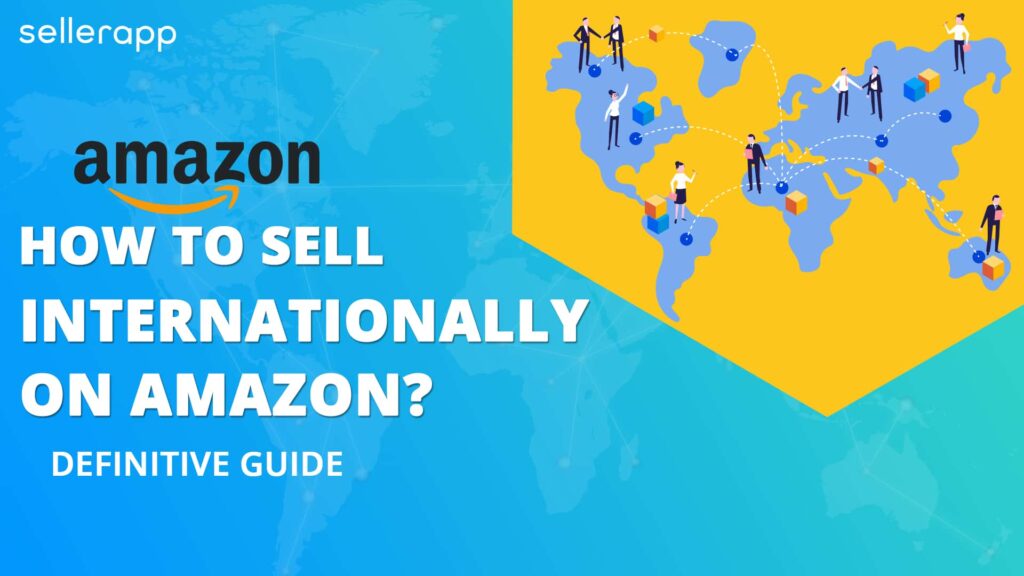Mastering International Sales: A Comprehensive Guide to Handling International Sales and Shipping on Amazon

In the global marketplace of e-commerce, expanding beyond domestic borders opens up a world of opportunities for sellers looking to grow their business and reach new customers. Amazon, as the world’s largest online marketplace, offers sellers the opportunity to tap into international markets and sell their products to customers around the globe. However, navigating international sales and shipping on Amazon can be complex and challenging. In this extensive guide, we’ll explore the intricacies of handling international sales and shipping on Amazon, providing detailed explanations, practical strategies, and valuable insights to help sellers successfully expand their reach and grow their business internationally.
Understanding International Sales on Amazon
Before delving into the specifics of handling international sales, it’s crucial to understand what it entails and why it matters:
- Global Customer Base: Selling internationally allows sellers to reach a larger and more diverse customer base, increasing sales potential and revenue opportunities.
- Market Expansion: Expanding into international markets enables sellers to diversify their revenue streams and reduce reliance on any single market or region.
- Competitive Advantage: Selling internationally can provide sellers with a competitive advantage by offering unique products or services that may not be readily available in local markets.
Key Considerations for International Sales on Amazon
Expanding into international markets presents a unique set of challenges and considerations for sellers:
- Market Research: Conduct thorough market research to understand the cultural, economic, and regulatory differences of the target market, as well as the demand for your products and competition landscape.
- Shipping and Logistics: Develop a comprehensive shipping and logistics strategy to ensure timely and cost-effective delivery of your products to international customers, taking into account factors such as shipping carriers, customs regulations, and import duties.
- Currency Conversion: Consider the impact of currency conversion on pricing and profitability, and determine whether to list prices in local currency or convert prices to the seller’s native currency.
- Customer Service and Support: Provide excellent customer service and support to international customers, including multilingual support, localized content, and responsive communication channels to address inquiries and resolve issues effectively.
Leveraging Amazon’s Global Selling Program
Amazon offers a range of tools and programs to help sellers expand internationally:
- Amazon Global Selling: Amazon’s Global Selling program enables sellers to list and sell their products on Amazon’s international marketplaces, including Amazon US, UK, Europe, Japan, and more.
- Fulfillment by Amazon (FBA): Sellers can leverage Amazon’s FBA program to fulfill orders from international customers, storing inventory in Amazon’s fulfillment centers and allowing for fast and reliable shipping to customers worldwide.
- Global Export: Amazon’s Global Export program enables sellers to reach customers in over 100 countries and regions by offering international shipping options for their products.
Strategies for Successful International Sales on Amazon
To succeed in international sales on Amazon, consider implementing the following strategies:
- Optimize Product Listings: Ensure that your product listings are fully optimized for each international marketplace, including localized language, currency, and pricing, as well as culturally relevant content and imagery.
- Offer Competitive Pricing: Research local pricing trends and competitor prices to ensure that your products are competitively priced in each international market, taking into account factors such as shipping costs, taxes, and import duties.
- Provide Fast and Reliable Shipping: Offer fast and reliable shipping options to international customers, leveraging Amazon’s FBA program or partnering with reputable shipping carriers to ensure timely delivery of orders.
- Provide Excellent Customer Service: Provide excellent customer service and support to international customers, including multilingual support, responsive communication, and proactive order tracking and updates.
- Monitor Performance and Adjust Strategies: Continuously monitor your international sales performance and customer feedback, and adjust your strategies accordingly to optimize performance and address any challenges or opportunities that arise.
Conclusion
Handling international sales and shipping on Amazon presents both challenges and opportunities for sellers. By understanding the key considerations, leveraging Amazon’s Global Selling program, and implementing effective strategies for success, sellers can successfully expand their reach and grow their business internationally. So don’t miss out on the opportunity to tap into new markets and reach new customers around the globe. Start exploring international sales and shipping on Amazon today and unlock the full potential of your e-commerce business.




